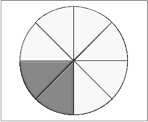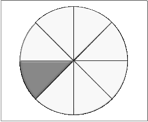Prepare for Unit and Lesson Planning
In this module, your team will agree on the flow of the fractions unit and plan one lesson within the unit in depth, to serve as a research lesson. The research lesson will be taught by one team member to their students while other team members collect data on student responses, to be examined and discussed during the post-lesson discussion.
Closely examining lessons developed by others is an excellent way to dive into the Lesson Study process and to build the teaching profession. If you are intrigued by the potential of linear measurement context to introduce fractions or to build understanding of equivalence, you may want to use the video and materials from Module 4 and Module 5 as the starting point for your research lesson. Or perhaps you would like to use insights about fractions gained from your work thus far to reshape your own curriculum’s lessons. In either case, this is a good time to:
Review Standards. We recommend that you revisit the Common Core State Standards or your state standards as you begin planning for your research lesson. The Standards should help you identify aspects of student understanding you want to work on. Your state may also have a Progressions document related to your standards.
Revisit Your Insights From Your Team’s Work So Far. What have you learned so far about challenges in understanding fractions? Are there instructional tasks or approaches you are eager to try out with your students? Has your investigation so far illuminated elements of your instruction that you would like to work on?
The table below (PDF) is an expanded version of the table first encountered in Module 2. It includes, in the right-hand column, some new ideas about how the linear measurement context might support students in overcoming key challenges in understanding fractions. Reviewing this table may help you look back on your work so far and finalize the design of your unit and research lesson within it.
|
Challenge in Understanding |
Example of Student Difficulty | How Might a Linear Measurement Context Help? |
|
A Fraction is a Number
|
|
|
|
Fractions Can Be Greater than One
|
|
|
|
Fractions Can Be Partitioned
|
|
|
|
What the Denominator Means
|
|
|
|
Knowing What is the Whole
|
|
|
|
Fraction Size
|
|
|
Consider where your students are mathematically. If the students who will take part in the research lesson have not yet had an in-depth introduction to fractions, your team might want to introduce fractions using a linear measurement context, drawing on the grade 3 fractions lessons from the Japanese curriculum as replacement lessons.
If your students are in grade 4 or 5, the grade 3 Japanese lessons may still provide a good starting point from which you can go on to build understanding of equivalent fractions and the other grade 4 and 5 standards. Or you can use your work so far to consider the key understandings you want to build using your own curriculum.
Write the “Rationale” (#4) section of the Teaching-Learning Plan by briefly summarizing your current thoughts on what you want your research lesson to accomplish. Don’t worry about writing a perfect lesson rationale. The point is to consolidate your thoughts before you begin detailed planning of the lesson. You can revise your lesson rationale later.
Review the chart “Lesson Flow: Teaching Through Problem-Solving” below. When you watched the fractions lessons on video, you probably noticed that students built new mathematical understandings by solving and discussing a challenging problem, and that the new mathematical ideas were drawn from discussion of the students’ own work. The chart Lesson Flow: Teaching through Problem-Solving summarizes the flow of a Japanese teaching through problem-solving lesson, which is very similar to the lesson flow recommended in 5 Practices for Orchestrating Productive Mathematical Discussions, by Margaret S. Smith and Mary Kay Stein. Lesson study is an ideal opportunity to work with colleagues on a lesson structure that challenges students to develop as mathematical thinkers and problem-solvers.
Lesson Flow: Teaching Through Problem-Solving (PDF)
| Lesson Phase | Activity and Purpose |
| Introduction and Posing the Task (brief) |
Teacher poses the problem. Students grasp it, become interested in solving it, and recall related ideas. |
|
Independent Problem-Solving (7-20 min) |
Students bring their own prior knowledge to bear, trying to solve the problem. There may be input from classmates after students work for a few minutes on their own, but students are individually exerting effort to come up with a solution approach. Students are not simply following the teacher’s solution. Teacher circulates, noting student solution methods on a seating chart for teacher’s reference during next phase of the lesson. Teacher may question some students (e.g., “What is the problem asking?” to struggling students; “Can you write an equation to go with your diagram?” to students who think they are finished). |
|
Presentation and Class Discussion of Students’ Solution Approaches; this phase is orchestrated by teacher’s neriage (“kneading” or “polishing” discussion) (15-30 min) |
Teacher designates several students to present their work on the blackboard and explain it. Choice and sequence of the student work is planned by teacher in order to support development of the important mathematical understandings. (Incorrect approaches are sometimes included in the presentations.) Class members actively study the solutions, supported by teacher questions such as “How many solved it this way?” and “Do you agree with this method?” Students contrast solutions, supported by teacher questions, such as “What is the same and different about Sam’s and Marika’s solutions?” and “What are the good points and difficulties of each solution method?” Discussion focuses on the thinking and reasoning used in problem solving and the central mathematical ideas. |
|
Lesson Summary and Consolidation of Knowledge; may include assessment task (brief) |
Teacher draws on student thinking to summarize what has been learned (usually on blackboard). Students use the blackboard record and math journals to organize, reflect on, and consolidate their thinking. Class often ends with a journal writing prompt such as “What I learned today.” |


